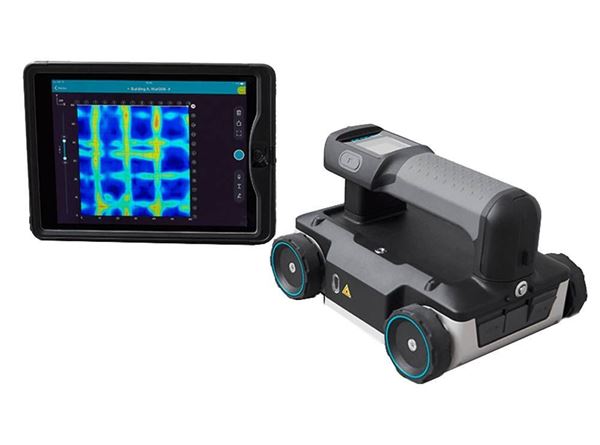Concrete Scanning: A Crucial Step Towards Making Certain Structural Honesty and Safety And Security
In the realm of construction and framework maintenance, the importance of concrete scanning can not be overstated. This thorough process holds the crucial to unveiling potential threats concealed beneath the surface of apparently solid frameworks. By employing sophisticated modern technology and methods, concrete scanning serves as a crucial device in making certain that the integrity and safety of bridges and buildings are supported to the highest criteria. Nonetheless, beyond its surface-level implications, the function of concrete scanning extends much much deeper than fulfills the eye.
Relevance of Concrete Scanning
Concrete scanning plays a vital role in guaranteeing the architectural honesty and safety of buildings and facilities tasks. By utilizing sophisticated technologies such as ground-penetrating radar (GPR) and electromagnetic induction, specialists can non-destructively inspect concrete structures to identify possible issues, voids, embedded objects, and reinforcement design. This procedure enables early detection of anomalies that could jeopardize the stability of a structure, avoiding expensive problems and making sure the safety and security of occupants.
Concrete scanning is especially necessary throughout the preparation and construction phases of a job. Prior to exploration, reducing, or coring right into concrete, scanning helps determine the precise locations of rebar, post-tension cables, and various other ingrained aspects, lowering the threat of unintended hits that can cause structural weaknesses. Additionally, concrete scanning help in quality assurance by confirming the thickness of concrete covers and discovering any discrepancies that might impact the general longevity of the structure. Ultimately, spending in concrete scanning solutions is not just an aggressive procedure to reduce risks yet additionally an essential step in the direction of keeping the long-lasting safety and security of buildings and infrastructure.
Modern Technology for Concrete Inspection

Benefits of Early Detection
Timely detection of structural problems can significantly mitigate dangers and make sure the durability of building and construction tasks. By recognizing possible issues beforehand in the building and construction procedure, stakeholders can take aggressive actions to attend to problems prior to they escalate right into bigger and much more costly problems. One of the key advantages of very early detection is the avoidance of architectural failures, which can pose serious safety and security threats and cause project hold-ups and monetary losses.
Furthermore, early discovery enables for timely fixings and upkeep, which can help expand the life expectancy of the structure. By addressing concerns quickly, construction groups can stay clear of expensive repair services and even the demand for early replacement of architectural components. This aggressive method not only saves money and time however also enhances the overall security and longevity of the building project.
Furthermore, early discovery can improve job planning and decision-making by offering stakeholders with beneficial insights right into the condition of the framework. Equipped with this info, task supervisors can make informed options concerning construction approaches, materials, and timelines, resulting in extra efficient and effective job outcomes.
Making Certain Architectural Stability
Making sure the architectural stability of a construction project is critical to its safety and longevity. Concrete scanning plays an essential role in making certain you could try here architectural stability by discovering prospective issues such as voids, delamination, or support rust that might compromise the integrity of the framework over time.
By making use of sophisticated scanning modern technologies like ground-penetrating radar (GPR) and electromagnetic induction, building and construction experts can non-invasively examine concrete structures to recognize locations of problem underneath the surface. This proactive strategy permits for the early detection of issues or weak points, enabling prompt repair work or reinforcement to avoid structural failures.
Regular concrete scanning during various building phases and throughout the life cycle of a framework can aid keep its security, minimize dangers, and guarantee the safety and security of owners. By focusing on architectural security via concrete scanning, building and construction tasks can improve their durability and resilience, ultimately adding to greater security and long life.
Preventing Vital Failures
To guard against catastrophic occasions, thorough tracking and aggressive maintenance are imperative in preventing essential failings within structural frameworks. Finding potential problems prior to they escalate is crucial to protecting against architectural failures. Carrying out routine evaluations, such as concrete scanning, can disclose surprise defects like spaces, cracks, or corrosion that might jeopardize the honesty of a framework. By using sophisticated scanning modern technologies like Ground Penetrating Radar (GPR) or Concrete X-ray, engineers can non-destructively evaluate the problem of concrete and determine weak factors that need support or repair - RainierGPR Service Areas.

Conclusion
To conclude, concrete scanning plays a crucial role in guaranteeing structural integrity and security by using advanced modern technology for very early detection of possible concerns. This positive method helps prevent crucial failures and guarantees the stability of frameworks. It is her response necessary to prioritize concrete evaluation as a conventional method to safeguard the longevity and safety and security of buildings and infrastructure.
Concrete scanning plays a crucial duty in making sure the structural honesty and security of buildings and framework jobs. Additionally, concrete scanning help in quality control by validating the thickness of concrete covers and detecting any type of inconsistencies that may affect the overall resilience of the framework. Concrete scanning plays a vital function in making certain architectural security by finding prospective issues such as spaces, delamination, or reinforcement corrosion that can jeopardize the integrity of the framework over time.

In final thought, concrete scanning plays an important function in making sure structural integrity and safety by making use of innovative innovation for early detection of potential concerns.
Comments on “RainierGPR Service Areas: Relied On Concrete Scanning Providers in Several Places”